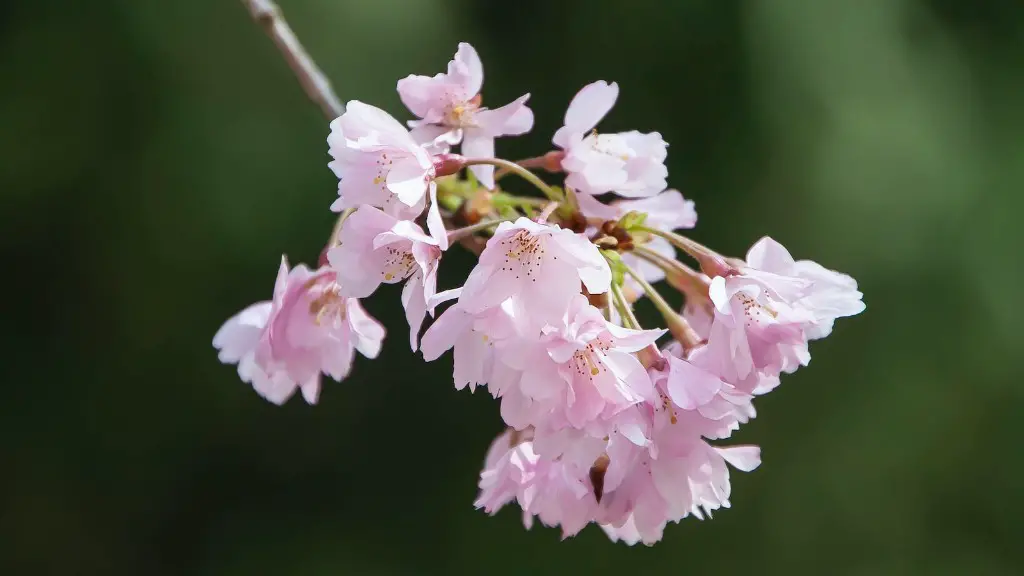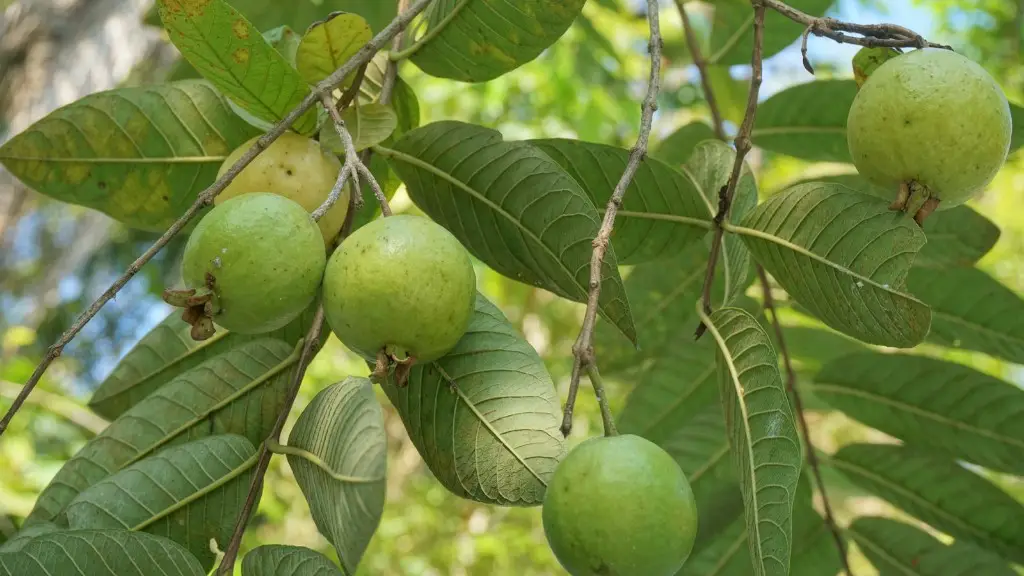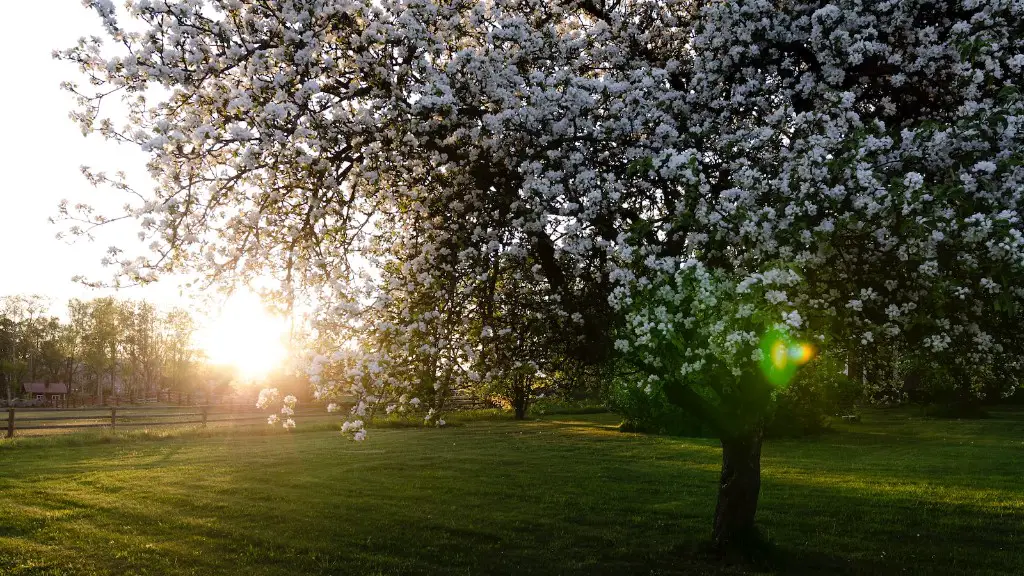A cherry tree is an unmissable spectacle of natural beauty. With its delicate, curving branches and lush, verdant foliage, a cherry tree is an awe-inspiring sight. But what do cherry trees actually look like?
Cherry trees come in a variety of shapes and sizes and can range from dwarf shrubs to majestic trees. The most common cherry trees are Prunus avium, Prunus cerasus, and Prunus serrulata. Each of these species boasts distinct features.
Prunus avium, commonly known as the wild cherry tree, is the most widespread in Europe and can reach up to 65ft in height. Its short trunk supports an umbrella-shaped crown, made up of sparse, spindly branches. Its oval, serrated-edged leaves are usually dark green in colour, while its flowers – which appear in the springtime – are white, with a sweet, almond-like scent.
Prunus cerasus is a much smaller variety – often staying less than 15ft in height – and is typically surrounded by a bush-like crown of glossy green foliage. Its leaves are long, narrow and pointed, while its flowers come in shades of pink and are known for their intense fragrance. It produces small, dark red cherries, which are typically tart and acidic.
Finally, Prunus serrulata, otherwise known as Japanese Cherry, has a similar structure to Prunus avium but with a shorter trunk and much less foliage. Its leaves are dark green, while its flowers tend to be a light pink-white in colour and are renowned for their picture-perfect design.
These are just some of the different varieties of cherry tree available. While they may all look different, each species has its own distinctive features that help to draw the eye. As such, cherry trees are often planted to provide a pleasing contrast to other, more uniform specimens.
The Blossoming of a Cherry Tree
In the spring, cherry trees are in full bloom. This is a favourite time for photographers, as their bright, fragrant, pastel-coloured flowers make for some truly iconic images. The blooming period tends to last up to around three weeks, although the exact duration is determined by numerous factors, such as the weather and the variety of tree.
Once this period is over, the petals of the flowers drop from the tree – a process that is often likened to a light snowfall. By late spring and early summer, the flowers give way to the first cherries, which begin to emerge from the branches. The ripe, juicy fruit is an entirely different sight – and taste – to behold.
The Uses of a Cherry Tree
Despite their natural beauty, cherry trees are not just ornamental. In fact, they can provide a variety of uses to those that harvest their fruit. For instance, a single cherry tree can yield between 10-20 kilograms of cherries each season. This bountiful harvest can be used to make all sorts of delicious dishes, from preserves and pies, to liqueurs and spirits.
Cherry trees can also be used to make various types of furniture. Its strong, sturdy timber is particularly popular amongst those that practice woodworking, as it is ideal for making items like chairs and beds. More recently, cherry wood has become a popular choice for dining room tables and other pieces of furniture that require a more distinctive touch.
The Planting of a Cherry Tree
When it comes to planting a cherry tree, you may want to pay extra attention to which variety you choose. Although many cherry trees are hardy and require minimal care, others are more sensitive and may require more maintenance in order to thrive. It is therefore always worth doing your research and speaking to a landscaping expert before committing to any particular variety.
Once you’ve chosen a suitable tree, the next step is to prepare the soil. It is vital that cherry trees are planted in a well-drained and sunny area, as this will give them the best chance of flourishing. Once planted, the tree should need very minimal watering and pruning, beyond the occasional light pruning to maintain its shape.
The Care of a Cherry Tree
Cherry trees are relatively low-maintenance and can offer beauty and bounty for many years. Nevertheless, they still require proper care in order to stay healthy and productive. One of the most important aspects of caring for a cherry tree is to ensure it receives adequate water and nutrients. This can often be achieved by applying a fertilizer specially formulated for fruit trees, as well as avoiding over-watering and making sure the drainage channels are clear.
Pests are another major concern, as these can severely damage a cherry tree’s foliage and fruit. The most common pests include aphids, scale bugs, silver leaf moth, and cherry slugworm. These can all be treated with specific sprays, which should be applied carefully in order to avoid further damage.
The Harvesting of a Cherry Tree
Cherry trees come into full production in the summer months and can produce abundant yields of their juicy, sweet fruit. To successfully harvest a cherry tree, it’s important to identify when the fruit is ripe, as this will vary between varieties. Ideally, cherries should be hand-picked in order to avoid any unnecessary damage, although a number of tools such as picker poles and ladders can be used if necessary.
Once harvested, it is important to use the fruit immediately or store it in a cool place in order to preserve it. This can be done either by freezing or preserving the fruit in jars. Alternatively, the cherries can be made into various types of preserves that can last for several months.
The Pruning of a Cherry Tree
Pruning a cherry tree helps to keep it healthy, safe and productive. In order to ensure the tree remains in good condition, it is recommended to prune it annually in the winter or early spring when it is still dormant. This should remove any dead, diseased or damaged branches, as well as any excess growth that could impede sunlight from reaching the other branches.
For most cherry trees, light pruning is sufficient, although it is always worth seeking professional advice from an arborist before undertaking any heavy pruning work. Pruning should also be done with care in order to avoid any accidental damage to the trunk or branches of the tree.
The Lifespan of a Cherry Tree
The expected lifespan of a cherry tree can vary greatly between varieties, but most are capable of living for 25-50 years. However, like all other plants, cherry trees are susceptible to a variety of ailments that can impede growth and reduce their lifespan. These include bacterial canker and various types of rot, both of which require prompt attention in order to preserve the life of the tree.
With proper care and regular maintenance, though, a cherry tree can offer stunning visuals and generous harvests for many years. In fact, some cherry trees, such as those found in Japan, are said to have been growing for centuries – testament to their incredible durability.




